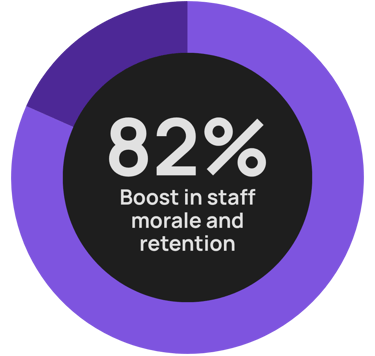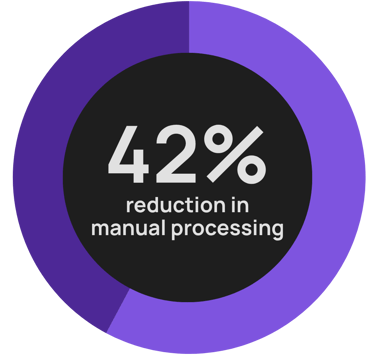
CASE STUDY
Spreadsheet Empires Collapse
When the most important asset you've got is a spreadsheet—you've got problems.


THE CHALLENGE
Rapidly growing mid-sized businesses regularly depend on spreadsheet-based systems they've cobbled together to manage almost every facet of their operations.
Daily processes—tracking inventory, logging transactions, and even handling customer service requests—are typically performed manually in a sprawling collection of shared files. On the surface, this approach seems agile and flexible, but as business volumes increase, small cracks inevitably become incredibly wide chasms that time, money, and effort disappear.
Regular communication breakdowns and minor errors become recurring issues across these businesses.
A tipping point we commonly see is where a single formula misfires or an employee misinterprets sheet data, causing missed opportunities, incorrect data entry, and at worst a loss of customers. With no automated checking or alerts in place these mistakes often go unnoticed until angry customers begin flooding support channels, reporting missing deliveries, delayed shipments, and increased tension between management, staff, and their customers.
These businesses find themselves in perpetual catch-up mode, always a step behind customer demand, and feeling like they're slowly losing the battle to manage their business every day. The constant state of "putting out spot-fires" becomes the new normal, as management juggle fixing mistakes with day-to-day admin.
Teams scramble to reconstruct lost data. Staff work even more overtime to restore basic order flow. Productivity tanks. Morale drops. Bottlenecks become rampant. Brand reputation suffers.
And customers go elsewhere.
THE SOLUTION
We approach new engagements with a deep workflow audit, mapping out the manual processes, pinpointing recurring failure points, and understanding the effect on your daily business routines.
Working closely with operations and fulfilment teams, we design and implement robust, highly-automated management systems which integrate directly with your existing platforms, and tailored to your business's core processes.
These systems integrate directly with existing platforms, automatically capture and validate critical business data in near-real time. Information syncs continuously across systems, so all departments work from the same accurate, up-to-date source of truth, not from a decade-old spreadsheet that's more duct tape and tears than functional system.
Manual spreadsheet entries become obsolete—business processes flow seamlessly from initiation through completion, with complete traceability at every step. Giving your staff the confidence and clarity they're making the right decisions every time.
What once took hours of repetitive, error-prone manual work can now be managed in minutes, with greater accuracy and visibility than ever before.
We see the same core issues time and again, so we follow a proven approach—adapted for each business, but grounded in what works for most.
Here’s how a project from spreadsheet ops to automation looks over a 5-week engagement:
Process Audit (week 1): Review of all business processes and existing platforms. Nothing gets left out.
Staff and Management Interviews (week 1): We gather insights from both leadership and frontline staff—everyone’s pain points and existing workarounds come to light during our deep dive.
Quick Win Selection (week 2): We always target a “low hanging fruit” first. One simple, high-impact automation to show what’s possible, and provide the highest return-on-investment possible.
Platform Implementation (week 2): We introduce a cloud-based automation platform for your business that connects your existing tools and streamlines data—most businesses slot this in with minimal fuss.
Custom Workflow Development (week 2-4): We build the selected workflow as outlined in the audit process, tailored to your business—nothing off the shelf, all based on what you actually need.
Pilot Rollout and Testing (week 3-4): Key staff selected to test the new workflows in real conditions, and their feedback is built in before wider rollout across your teams.
Full Deployment and Monitoring (week 5): Once the pilot’s a success, we roll out the new process across the business, with monitoring and support to catch issues early and keep things running smoothly.
Building your future together (ongoing): With the up-front audit in place as a guide, we continue to work with you and your staff hand-in-hand to select the most valuable processes to be next on the list to transform your operations.
NOTE: Actual project timeframes may vary depending on business size and complexity.
THE IMPACT WE SEE
Clients frequently tell us that they never truly realised how much time and money they were losing until everything just worked. That while spreadsheets served them well initially, they became a real constraint on growth rather than an enabler.
42% reduction in time spent manual processing of core business data.
Far fewer critical data errors recorded after automation rollout.
Teams more proactive in both customer service, and business growth projects.
$18,000 per month (on average) in recovered revenue and avoided operational losses.
Elimination of spot-fire management enabling predictable and scalable workflows.
Dramatic boost in staff morale and retention.
Customer complaints about delays and errors decrease significantly.






READY TO TRANSFORM YOUR BUSINESS
This is a pattern we see repeatedly across businesses of similar size and growth stage, no matter the industry.
Every business is unique, but the principles remain the same: eliminate manual work, connect your systems, and give your team the tools they need to focus on what matters most.
Note: This case study uses averaged data drawn from similar client projects across various industries. It illustrates common challenges and typical results for businesses facing similar operational complexity, based on industry best practice and founder expertise.
